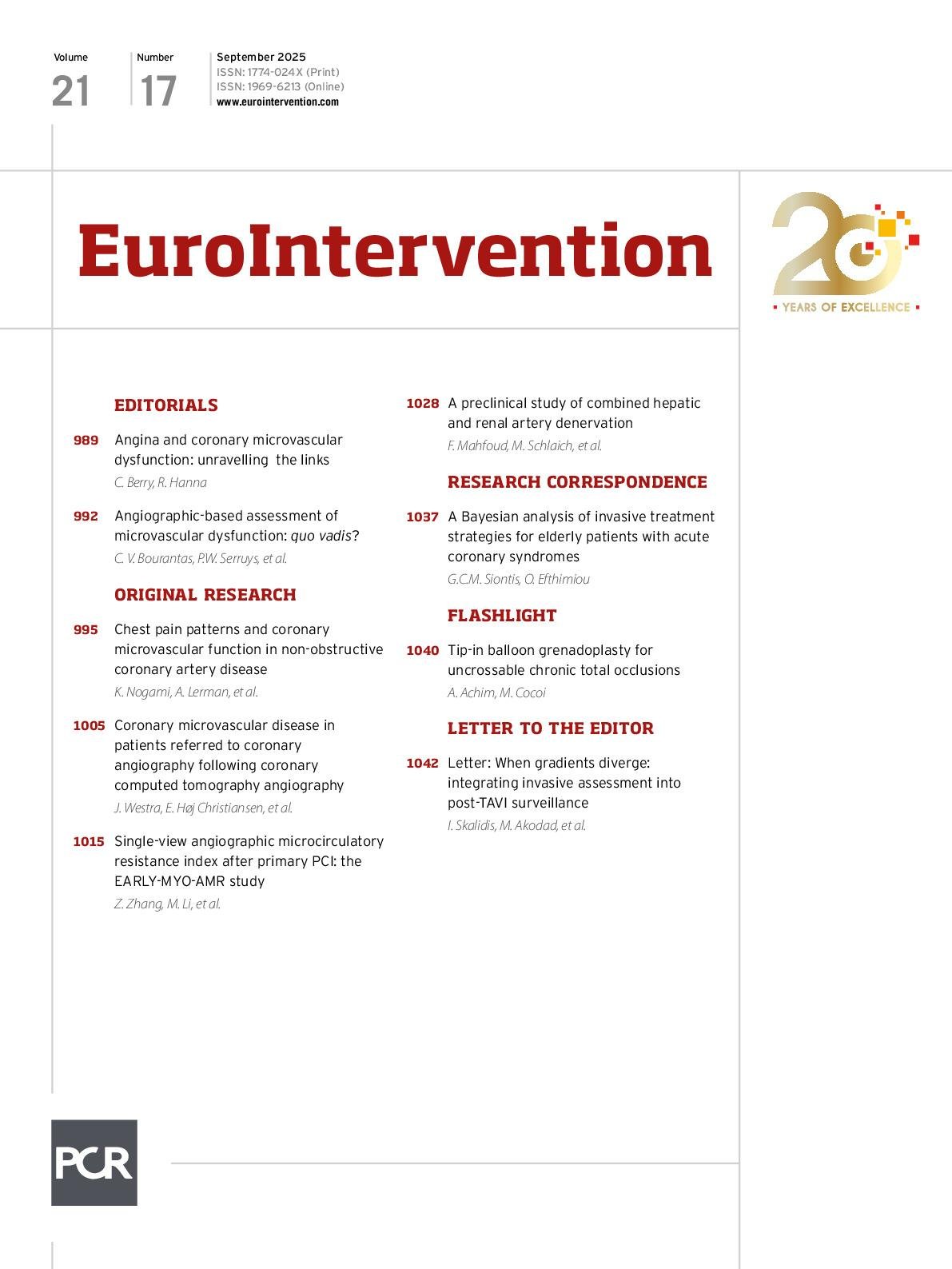In this issue of EuroIntervention, Nogami et al present insights into how chest pain phenotypes relate to coronary microvascular dysfunction (CMD) and outcomes in patients with angina and non-obstructive coronary arteries (ANOCA)1. Their retrospective study of over 1,200 patients who underwent coronary reactivity testing (CRT) is among the largest to examine the relationship between symptom type (rest, exertional, or both), CMD and cardiovascular events. Of these patients, 299 (23.7%) reported exertional chest pain only and 341 (27.0%) reported resting chest pain only; their median age was 52 [interquartile range 44, 62] years, and 418 (65.3%) were female.
The work addresses an important clinical need. ANOCA is prevalent, affecting up to 50% of patients undergoing invasive coronary angiography for chest pain, and CMD is increasingly recognised as a central pathophysiological mechanism. However, symptom interpretation remains challenging in clinical practice. The authors demonstrated that participants with exertional chest pain had significantly lower coronary flow reserve (CFR; 2.8 vs 3.0; p<0.01) and blunted coronary blood flow (CBF) response to intracoronary infusion of acetylcholine (ACh) compared to those with resting symptoms. These findings...
Sign up for free!
Join us for free and access thousands of articles from EuroIntervention, as well as presentations, videos, cases from PCRonline.com

